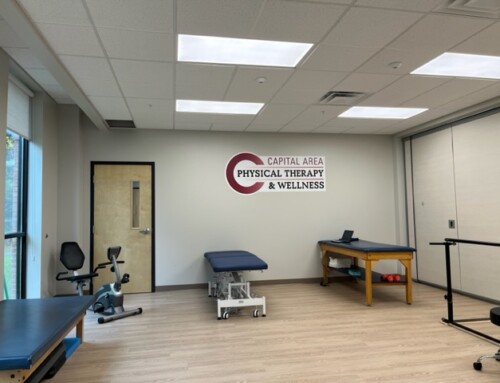by Nicole Whitbeck, SPTPT
When And How Should You Apply Ice To An Injury?
Why Is Ice Used To Treat Inflammation And Swelling?
Have you ever heard the phrase RICE following a new injury? I bet you have. These acronyms are commonly used to help those who have sustained an injury remember what to do during the healing process. RICE stands for:
- Rest
- Ice
- Compression
- Elevation
In 1978, Dr. Gabe Mirkin coined the acronym in his “Sportsmedicine Book.” For about 30 years, there was little research to prove that RICE was not an effective method to follow immediately after an injury. In 2013, Gary Reinl wrote “Ice! The Illusionary Treatment Option” claiming that ice was ineffective to the healing process after an injury. Which started more and more research to determine which scholar was correct. Following these four steps after an injury has been very common practice since.
Ultimately, there was quite a lot of research evidence stating that RICE does not provide the most optimal healing environment for an injury from a physiological standpoint. Meaning, that certain components of the RICE principle, specifically ice, go against the body’s natural way of healing.
The 3 Phases Of Injury Recovery
There are 3 phases of recovery or healing process. These steps occur in this specific order and cannot happen unless the previous step has occurred.
1. Inflammation
2. Repair
3. Remodeling
When we have sustained an injury, we have been taught that applying ice helps to reduce the inflammation that occurs within the area of injury. The problem with reducing inflammation is it also delays the healing process. Inflammation, in simple terms, allows the blood vessels in the area to get bigger and bring in healing agents to the damaged tissues. The healing agents work to clear away damaged tissues and promote new tissue development in that area.
When Should You Not Apply Ice To A Injury?
When ice is used when inflammation is present, the blood vessels narrow therefore fewer healing agents can get through these smaller vessels to start the healing process. This narrowing of blood vessels has a longer lasting effect and will continue to occur even when ice is not being applied to the area. Therefore, it takes much longer for the body to get the amount of healing agents it requires to the area. The inflammatory phase of healing can last anywhere from 6 days or 4 weeks, but each individual is different, and this time frame is unique to each person and injury.
It may be unadvised to apply ice to an injury during this time as stated: there is a delay in the healing process.
When Should You Ice An Injury?
Compression and elevation do not have adverse effects in the healing process. There are options that can provide the injured person with a sense of relief while not interfering with the healing.
Ice is a great option if your goal is pain relief outside of the acute inflammatory process.
When applying ice there are considerations, the amount of time you should apply depends on the location of the injury. An area with more fat and muscle can be iced for up to 20 minutes while an area with less fat and muscle should only be iced for 3-5 minutes at a time. The area being iced should be checked for any adverse effects such as excessive redness, blistering or burns and removed immediately if undesired effects occur. Allowing time in between sessions of applying ice can reduce the likelihood of adverse effects.
Our Capital Area Physical Therapy & Wellness offer specific treatment programs to help manage pain, and stay active. Call (518) 289-5242 to schedule an appointment at one of our physical therapy clinics in Malta – Saratoga Springs or Queensbury – Glens Falls.





